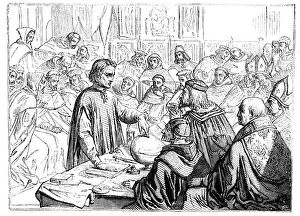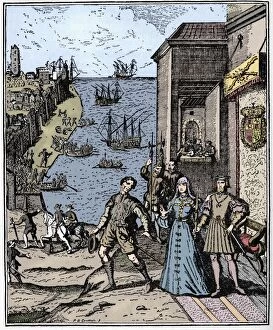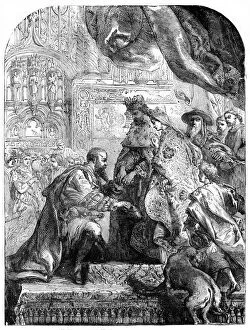Ferdinand The Catholic Collection
Ferdinand the Catholic, also known as Ferdinand II of Aragon, was a prominent figure in Spanish history during the late 15th and early 16th centuries
All Professionally Made to Order for Quick Shipping
Ferdinand the Catholic, also known as Ferdinand II of Aragon, was a prominent figure in Spanish history during the late 15th and early 16th centuries. Born in 1452, he ruled alongside his wife Isabella I of Castile and together they played a crucial role in shaping Spain's future. One significant event involving Ferdinand was Christopher Columbus' appearance before the Council at Salamanca in 1487. This meeting marked an important step towards Columbus' eventual voyages to the New World under Spanish patronage. The tomb of Ferdinand and Isabella in Granada's Cathedral stands as a testament to their reign. Built by Gustave Doré during his Autumn Tour in Andalusia, this magnificent structure pays homage to their legacy. Speaking of Columbus, an intriguing depiction titled "Columbus Describing His Third Voyage" showcases him with Ferdinand and Isabella. Created by the American Bank Note Company in 1893, this artwork captures the momentous encounter between these historical figures. To gain insight into Ferdinand's era, one can explore Spanish costumes from around 1400. These garments provide a glimpse into the fashion trends that prevailed during his reign. Another notable sight is the Tomb of the Catholic Kings located in Granada. Captured by an unknown artist during the late 19th century or early 20th century, this image highlights another grand monument dedicated to Ferdinand and Isabella's memory. Religious art also played a significant role during their rule. The Madonna of the Catholic Monarchs is a masterpiece created by Master of Madonna of Catholic Monarchs between 1491-1493. This painting reflects both religious devotion and royal patronage that characterized their reign. A pivotal moment occurred on August 3rd, 1492 when Columbus set sail for his famous voyage across uncharted waters under Ferdinand's support. This historic event forever changed world history and opened up new possibilities for exploration and colonization.

















